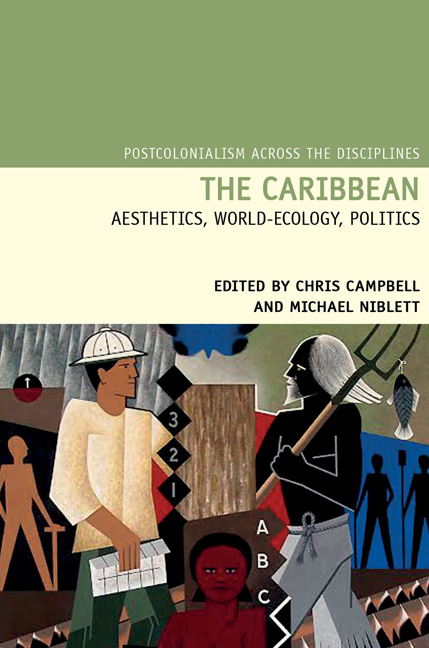Book contents
- Frontmatter
- Contents
- Acknowledgements
- Introduction: Critical Environments: World-Ecology, World Literature, and the Caribbean
- Prologue: The Brutalization of Truth
- Catastrophes and Commodity Frontiers
- Ecological Revolutions and the Nature of Knowledge
- 4 ‘The Abstract Globe in One's Head’: Robert Schomburgk, Wilson Harris, and the Ecology of Modernism
- 5 Mining and Mastery: Ethnography and World-Ecology in the Work of Charles Barrington Brown
- 6 Hegemony in Guyana: REDD-plus and State Control over Indigenous Peoples and Resources
- Economies of Extraction: Restructuring and Resistance
- Epilogue: Tingaling
- Notes on Contributors
- Index
4 - ‘The Abstract Globe in One's Head’: Robert Schomburgk, Wilson Harris, and the Ecology of Modernism
from Ecological Revolutions and the Nature of Knowledge
- Frontmatter
- Contents
- Acknowledgements
- Introduction: Critical Environments: World-Ecology, World Literature, and the Caribbean
- Prologue: The Brutalization of Truth
- Catastrophes and Commodity Frontiers
- Ecological Revolutions and the Nature of Knowledge
- 4 ‘The Abstract Globe in One's Head’: Robert Schomburgk, Wilson Harris, and the Ecology of Modernism
- 5 Mining and Mastery: Ethnography and World-Ecology in the Work of Charles Barrington Brown
- 6 Hegemony in Guyana: REDD-plus and State Control over Indigenous Peoples and Resources
- Economies of Extraction: Restructuring and Resistance
- Epilogue: Tingaling
- Notes on Contributors
- Index
Summary
In The Condition of Postmodernity (1989), David Harvey argues that the economic crisis that ‘engulfed the whole of what was then the capitalist world’ in 1847–48 ‘created a crisis of representation, and that this latter crisis itself derived from a radical readjustment in the sense of time and space in economic, political, and cultural life’ (260–61). The events of the mid-nineteenth century, he suggests,
proved that Europe had achieved a level of spatial integration in its economic and financial life that was to make the whole continent vulnerable to simultaneous crisis formation. The political revolutions that erupted at once across the continent emphasized the synchronic as well as the diachronic dimensions to capitalist development. The certainty of absolute space and place gave way to the insecurities of a shifting relative space, in which events in one place could have immediate and ramifying effects on several other places. (Harvey, 1989, 261)
Harvey contends that such transformations were integral to the ‘first great modernist cultural thrust’ (263). As old certainties regarding space and time crumbled with the disaggregation of the existing, stabilized structures of social relations, that which had been considered ‘real’, and represented as such, could no longer be understood in the same way. This defamiliarization of the everyday encouraged the kind of artistic experimentation found in the work of, say, Manet, whose brushstrokes, writes Harvey, began ‘to decompose the traditional space of painting and to alter its frame, to explore the fragmentations of light and colour’ (263).
Harvey's thesis is a suggestive one, I think, but his presentation is marked by a certain conceptual slippage. He begins his argument by speaking of ‘the whole of what was then the capitalist world’, only to go on to refer almost exclusively to Europe. Although he acknowledges that his analysis of space–time compression will use ‘the European case (somewhat ethnocentrically) as an example’ (240), the way in which his argument proceeds leads him to position that ‘first great modernist cultural thrust’ as a fundamentally European (or, at best, Euro-American) phenomenon.
- Type
- Chapter
- Information
- The CaribbeanAesthetics, World-Ecology, Politics, pp. 81 - 99Publisher: Liverpool University PressPrint publication year: 2016



